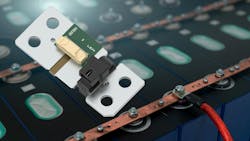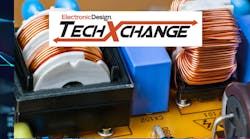Hybrid Current Sensor Reduces the Complexities of EV Battery Management
LEM has introduced a unique current sensor for electric-vehicle (EV) battery management. Dubbed the Hybrid Supervising Unit (HSU), the device is the first on the market to integrate both shunt and Hall-effect technologies in a single package.
In EVs, the battery-management system (BMS) plays three main roles: monitoring the state of charge (SOC) and state of health (SOH) of the high-voltage battery pack; ensuring safety by disconnecting the battery in the event of a short circuit or fault; and performing cell balancing to increase the driving range. Whether it’s used for circuit protection, power management, or control loops, accurate current sensing is vital across all of these functions.
To meet safety requirements in EVs, power engineers and systems designers often use different sensors for different current ranges—shunt resistors for 2,000 A of current, and open-loop, Hall-based current sensors for measurements up to 2,000 A.
While shunts have higher accuracy and faster response times, they must be placed directly on the copper wires in the PCB or busbars supplying current to the load, breaking the circuit. Conversely, magnetic Hall-based sensors are fully isolated and enable contactless current monitoring.
>>Check out these TechXchanges for similar articles and videos
By integrating both technologies, the HSU reduces the tradeoffs between accuracy, speed, and isolation. “This integration simplifies system architecture, enhances safety, and allows for seamless upgrades without altering the mechanical layout,” said Jérémie Piro, product manager for battery management and battery storage systems at LEM. “Additionally, it reduces the total bill of materials (BOM) and minimizes cycle time at the customer's end.”
HSU Built for the BDU
The HSU is specifically designed to be integrated into the battery disconnect unit (BDU). The BDU acts as a sort of on-off switch for the high-voltage battery pack, distributing the power from the battery to the powertrain and various other EV components.
The BDU incorporates voltage and current sensors as well as contactors, fuses, and other forms of circuit protection that can interrupt excessive current or short circuits. It also provides isolation monitoring and can disconnect the battery in case of a collision or other dangerous fault conditions.
Designed to be mounted on the busbars that distributes power in and out of the BDU, the HSU can measure up to 2,000 A across both components. The signals from each section of the device—the shunt and Hall-based current sensor—are then collected by the BMS. LEM said the plug-and-play unit fits into the same standard footprint as a shunt-based current sensor and works over a wide operating temperature range of −40 to 125°C.
At the BDU level, the HSU allows for minimal footprint, weight, and cost by eliminating external components. At the BMS level, the device enables system designers to reach the ASIL D safety level required in EVs today.
The resistance of the shunt-based current sensor is 25 µΩ, while the Hall-based component is galvanically isolated, with accuracy of 2% at 500 A and 5% at 2,000 A. The signal communication lines are separated (shunt signal and analog or digital bus for the hall-based device). It also comes with negative temperature compensation (NTC) signals for shunt temperature compensation. The HSU00 and HSU01 are designed for the most common busbar sizes: 84 × 36 × 3 mm and 84 × 20 x 3 mm, respectively.
LEM said it plans to expand the HSU family by combining a shunt with a coreless Hall-based current sensor to further reduce size and cost.
>>Check out these TechXchanges for similar articles and videos
About the Author
James Morra
Senior Editor
James Morra is the senior editor for Electronic Design, covering the semiconductor industry and new technology trends, with a focus on power electronics and power management. He also reports on the business behind electrical engineering, including the electronics supply chain. He joined Electronic Design in 2015 and is based in Chicago, Illinois.



